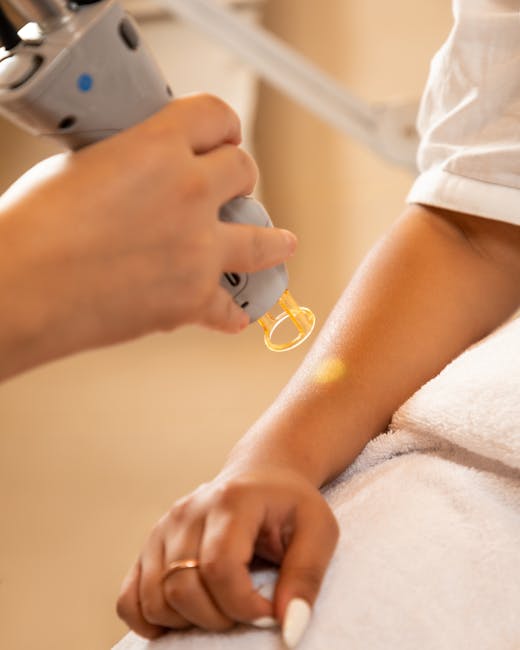Tammy Slaton’s Weight Loss Journey: Understanding Skin Removal Surgery and Aftercare
Tammy Slaton’s inspiring weight loss journey on 1000-Lb Sisters has captivated audiences, showcasing her dedication and resilience. Her significant weight loss, however, resulted in a substantial amount of excess skin, leading her to undergo skin removal surgery. This article delves into the complexities of this procedure, examining the process, recovery, potential complications, and the importance of proper aftercare.
The Necessity of Skin Removal Surgery After Massive Weight Loss
Significant weight loss, particularly exceeding 100 pounds, often leaves behind excess skin. This excess skin can cause various physical and psychological issues. Physically, it can lead to:

- Chafing and irritation: The folds of excess skin can rub together, causing discomfort, rashes, and infections.
- Skin infections: The moist environment created by the folds of skin provides a breeding ground for bacteria and fungi.
- Difficulty with hygiene: Cleaning the skin folds thoroughly can be challenging, increasing the risk of infection.
- Body image issues: The excess skin can negatively impact self-esteem and body image, leading to feelings of self-consciousness.
- Physical limitations: Excess skin can restrict movement and cause discomfort during physical activity.
For individuals like Tammy Slaton, who experienced dramatic weight loss, skin removal surgery becomes a necessary step to improve both physical and mental well-being. It’s not merely a cosmetic procedure; it’s a crucial part of completing their weight loss journey and achieving a healthier, more comfortable life.

Understanding the Skin Removal Surgery Procedure
Skin removal surgery, also known as body contouring surgery, is a complex procedure that involves removing excess skin and fat from various parts of the body. The specific areas addressed depend on the individual’s needs. In Tammy Slaton’s case, it’s likely that multiple areas were addressed. The procedure typically involves:

- Consultation and planning: A thorough consultation with a plastic surgeon is essential to assess the patient’s health, determine the extent of the surgery required, and discuss the risks and benefits.
- Anesthesia: The surgery is performed under general anesthesia.
- Incisions: Incisions are made to remove the excess skin and fat. The location and size of the incisions depend on the extent of the excess skin and the surgeon’s technique.
- Tissue removal: The excess skin and fat are carefully removed.
- Wound closure: The incisions are closed with sutures or staples.
- Post-operative care: The patient is monitored post-surgery, and specific instructions regarding wound care, pain management, and activity restrictions are provided.
The Recovery Process and Potential Complications
Recovery from skin removal surgery is a gradual process and can take several weeks or even months. Patients can expect:
- Swelling and bruising: Significant swelling and bruising are common in the initial days and weeks following the surgery.
- Pain and discomfort: Pain medication is usually prescribed to manage post-operative pain.
- Scarring: Scarring is inevitable with any surgical procedure. The location and appearance of the scars vary depending on the extent of the surgery and the individual’s healing process.
- Infection: Infection is a potential complication, requiring immediate medical attention.
- Seromas: Fluid collections (seromas) can develop under the skin, requiring drainage.
- Dehiscence: Wound separation (dehiscence) is a rare but serious complication.
It’s crucial for patients to follow their surgeon’s post-operative instructions meticulously to minimize the risk of complications and ensure optimal healing.
Importance of Aftercare for Optimal Results
Proper aftercare plays a vital role in the success of skin removal surgery. This includes:
- Wound care: Keeping the incisions clean and dry is crucial to prevent infection.
- Pain management: Taking prescribed pain medication as directed helps manage discomfort.
- Compression garments: Wearing compression garments helps reduce swelling and support the healing process.
- Regular follow-up appointments: Attending scheduled follow-up appointments allows the surgeon to monitor healing and address any concerns.
- Dietary considerations: Maintaining a healthy diet supports the healing process.
- Physical activity: Gradually increasing physical activity helps restore mobility and strength.
Tammy Slaton’s Experience: A Source of Inspiration
Tammy Slaton’s journey serves as an inspiration to many. Her commitment to weight loss and her willingness to undergo skin removal surgery demonstrate her dedication to improving her health and well-being. Her experience underscores the importance of holistic care, including both weight loss and subsequent body contouring procedures when necessary.
Conclusion
Skin removal surgery after massive weight loss is a significant undertaking, requiring careful consideration and a commitment to proper aftercare. Tammy Slaton’s experience highlights the transformative power of this procedure and the importance of seeking expert medical advice for individuals considering this type of surgery. While the journey may be challenging, the rewards of improved physical health, comfort, and body image are substantial.

